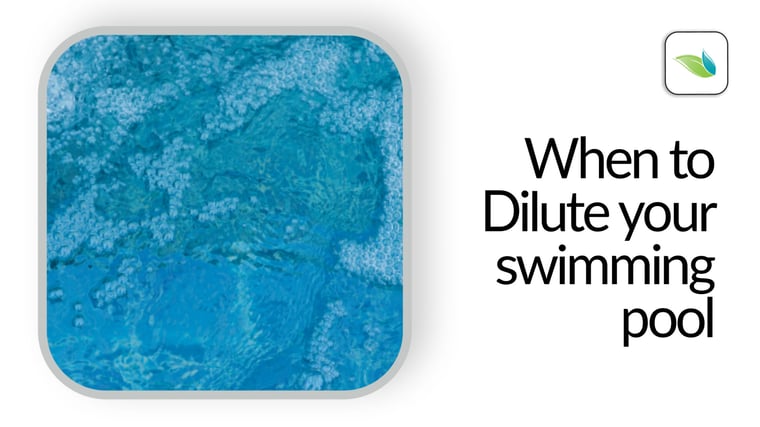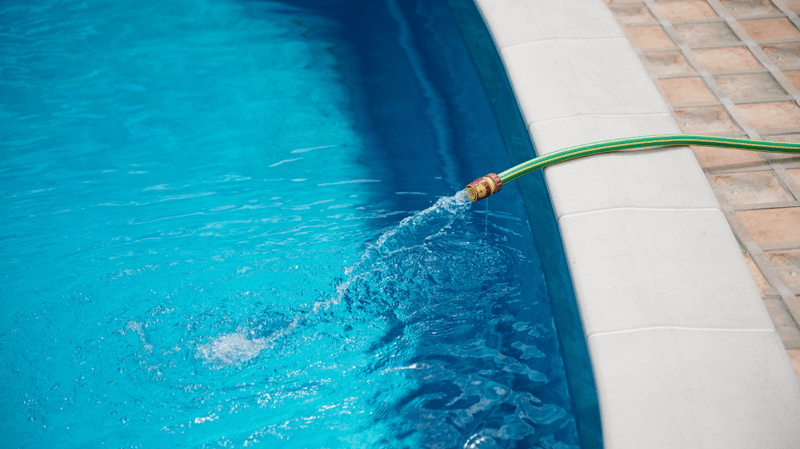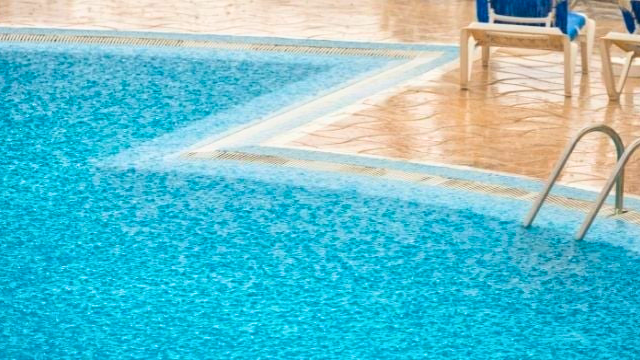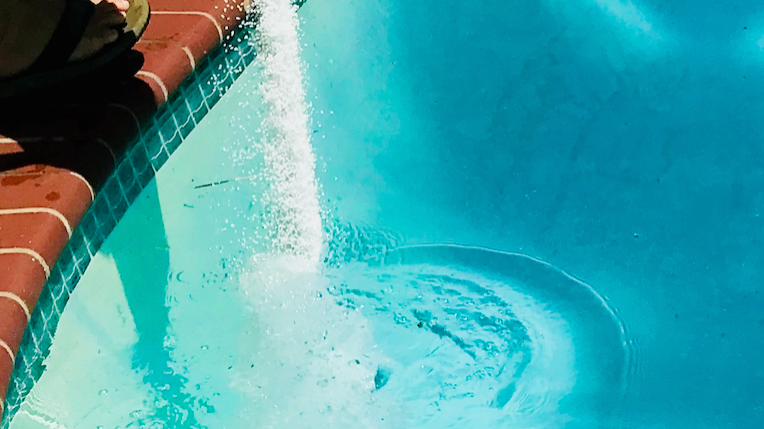When to Dilute a Swimming Pool

When is it necessary to dilute your pool? Let this article be your guide to when (and how much) to dilute your pool.
Covered in this article:
- What is dilution?
- How dilution impacts water chemistry
- Estimation
- When is dilution necessary?
- Chemistries reduced by dilution
- Calcium Hardness (CH)
- Cyanuric Acid (CYA)
- Total Dissolved Solids (TDS)
- Dilution does not always reduce
- Chemistries reduced by dilution
- Conclusion
What is dilution?
Dilution is the process of discarding some water and replacing it with fresh water. A total refill is also technically dilution...though it is more of a full reset. Dilution, in our terms, is when you drain (or pump out) a portion of your pool and replace it with fresh water. This could be tap water or rain/snow (like during the winter with a mesh cover). The result is diluted chemistry, where factors like calcium and cyanuric acid typically go down.
Dilution is one of the best solutions to combat accumulation.

How dilution impacts water chemistry
Dilution reduces total dissolved solids (TDS). TDS includes calcium hardness, cyanuric acid, metals, alkalinity, and more. The rate of reduction is directly proportional to the percentage of total water volume removed, minus the tap water chemistry.
Simply draining half the pool does not mean you have exactly half the TDS. You need to account for what the new water is bringing into the pool. That being said, rain and snow dilution contain zero TDS, as rain and snow are distilled water from the sky. Therefore it's pure dilution.

Estimation
Exact dilution percentages can only be known if you: a) know exactly how much water the pool contains, and b) know exactly how much water you are removing.
Both of these are possible if using water meters to fill the pool and to measure what you are discarding. But apart from such exact measurements, estimation is the best any of us can do. The good news is that dilution does not have to be exact. Any dilution is going to help reduce TDS, so just get as close as you can to your expected target, and test when it's done to see how well you did.
When is dilution necessary?
Factors like pH and alkalinity can be raised and lowered with chemicals, but some factors can only be raised with chemicals, not lowered. Those factors require some form of dilution to be reduced. And we include reverse osmosis (R.O.) filtration in the category of a form of dilution because it puts the filtered water back into the pool.
Those chemistry factors that can only be reduced by dilution are listed in the next section below.
But when should you dilute certain factors? One of the most common beliefs about swimming pools is that high TDS is always a problem, and it must be kept below 1500 ppm above tap water chemistry. That is not always the case, because it depends on what that TDS is comprised of. For instance, if you have high Cyanuric Acid (CYA), dilution is important for that alone.
If you have a saltwater pool, the salinity should not exceed about 4500 ppm, per the salt chlorine generator manufacturer's factory manual. Each salt cell manufacturer may be slightly different, but in general, if you have over about 4500 ppm salt, the conductivity is too high, and it compromises the salt cell's ability to produce the proper amount of chlorine.1

Chemistries Reduced by Dilution
Calcium Hardness (CH)
Calcium hardness is the amount of dissolved calcium carbonate (CaCO3) in your water. The most practical way to reduce it is by dilution. CH can also be reduced by reverse osmosis (R.O.) filtration. Or, if you want a mess, you can deliberately throw in soda ash to cloud the pool, precipitate calcium carbonate as dust, and vacuum the dust.
We strongly advise against the last option...it's messy and a headache. But hey, it removes calcium carbonate.
Cyanuric Acid (CYA)
CYA stabilizes chlorine by protecting it from degradation from sunlight. It also does not evaporate or go away naturally. Eventually, it can be broken down and oxidized by enough chlorine and enough time, but this generally takes many months to happen. And even when it does, CYA reduction is slow. So for practical purposes, dilution is still the best way to reduce CYA.
Total Dissolved Solids (TDS)
Anything else that contributes to TDS will also be reduced with dilution. These include metals, long-term byproducts from chemicals (such as algaecides), and salt. Yes, salt is included in TDS. On the Orenda Calculator™, the LSI formula calls for the TDS, not just salt. Learn more about this distinction in our help center, here.
Dilution does not always reduce
What happens if your tap water has a higher level of certain chemistry than the swimming pool does? Let's take phosphates for example. Say you use PR-10,000 and have below 500 ppb of phosphate in your water (because you're proactive and awesome). One day you decide to dilute the water to address another issue, like high CYA (again, because you're proactive and awesome).
Sure, the CYA will go down because there should be zero CYA in the tap water. But if your tap water contains higher phosphates than the pool has, your phosphate levels will rise from dilution.
This is also an issue with metals or high calcium hardness from well water. Whenever tap water has something really high in it (high alkalinity, high calcium, whatever), there's a chance those levels will rise in the pool.
Conclusion
Dilution means replacing whole water with new water. That new water can be from the tap, or from natural rain and snow. The impact of dilution depends on how much you dilute, and what the chemistry of the replacement water is. This is why pools that are winterized with mesh covers (or no covers) have a distinct advantage over pools that never dilute. Rain and snow are distilled water, so the pool benefits from pure dilution during the winter.

In general, dilution is the most guaranteed way to reduce chemistries like calcium hardness, CYA and TDS. If you have an accumulation problem, dilution may be the best solution.
1 While each saltwater chlorine generator (SWG) manufacturer may slightly differ on minimum/maximum salinity parameters, they are all similar. Too little salt will stress the SWG because it takes too much electricity to create chlorine. Too much salt will stress the SWG because it has to throttle down the electricity because the conductivity is too high to produce the optimal amount of chlorine. Follow your SWG manufacturer's guidelines and try to stay in the ideal level. Most of them will have ideal salt levels between 3000-3600 ppm.
